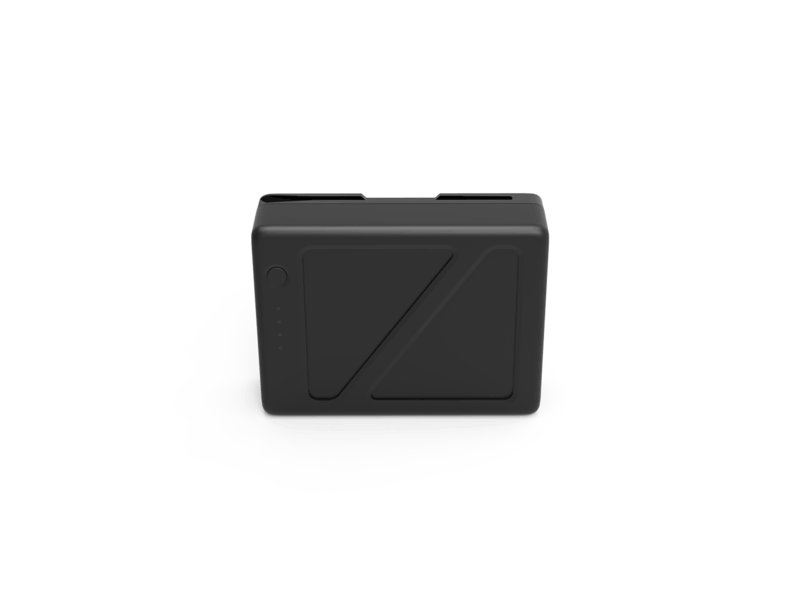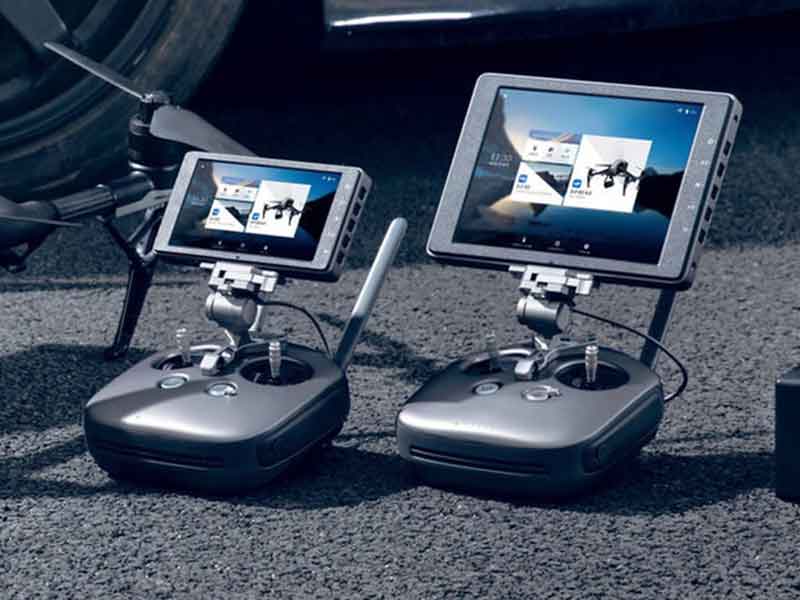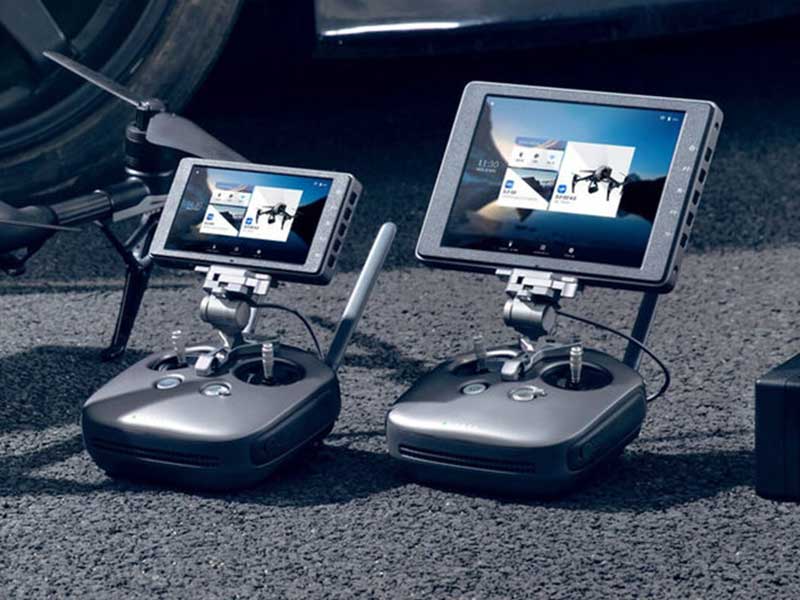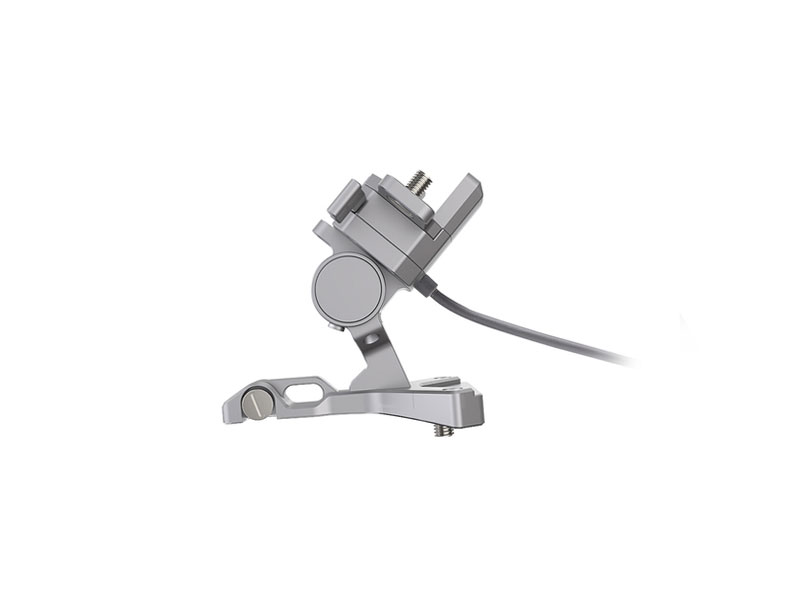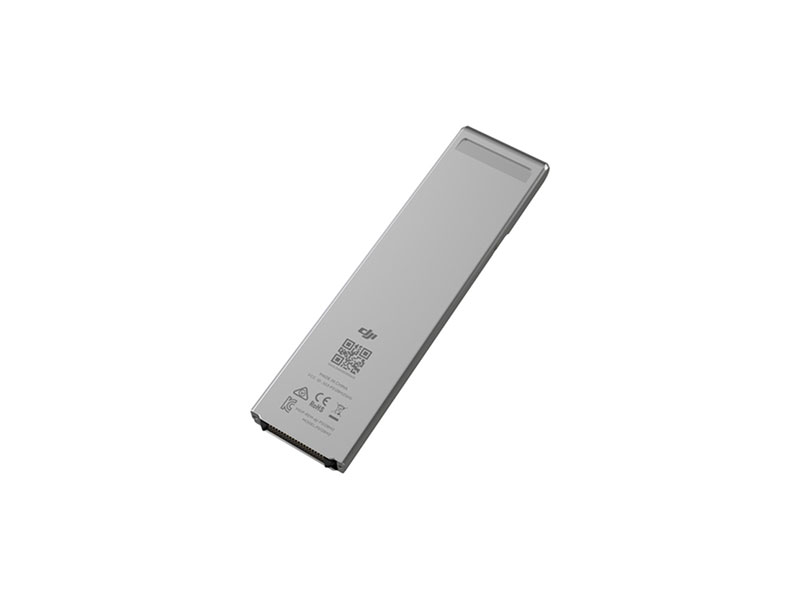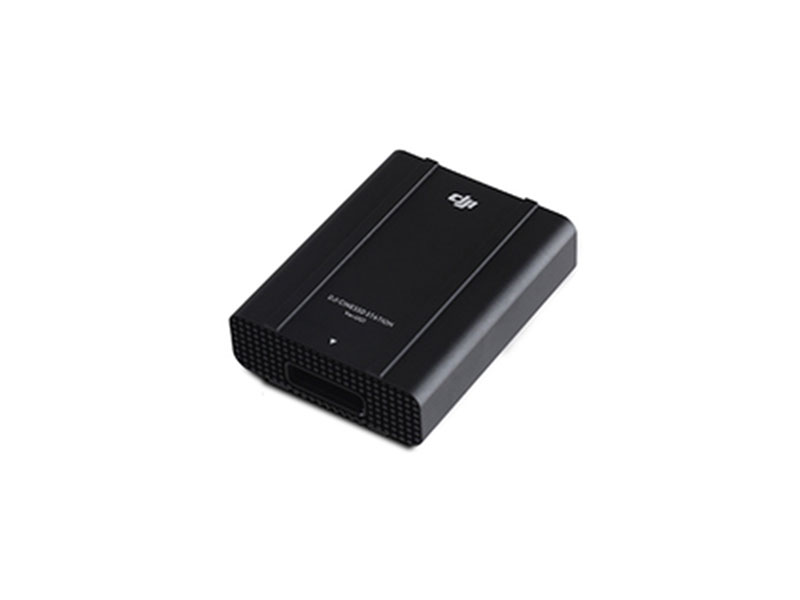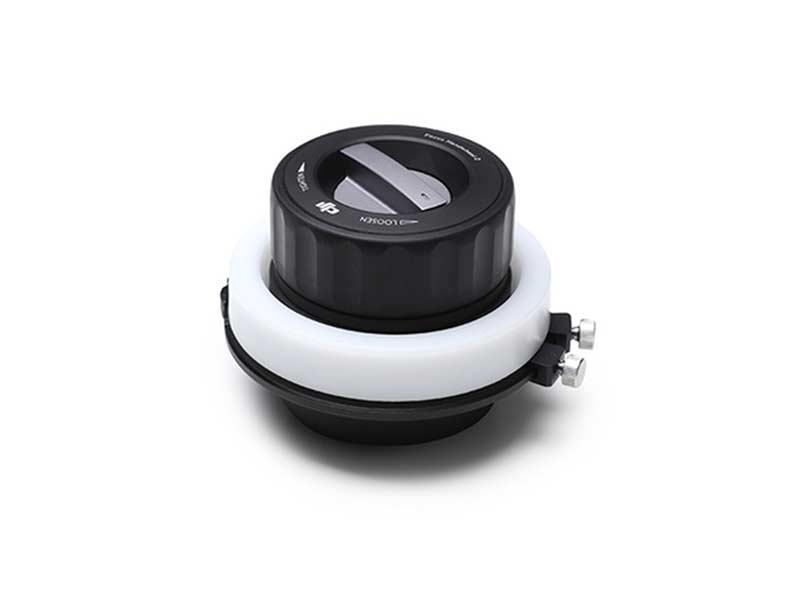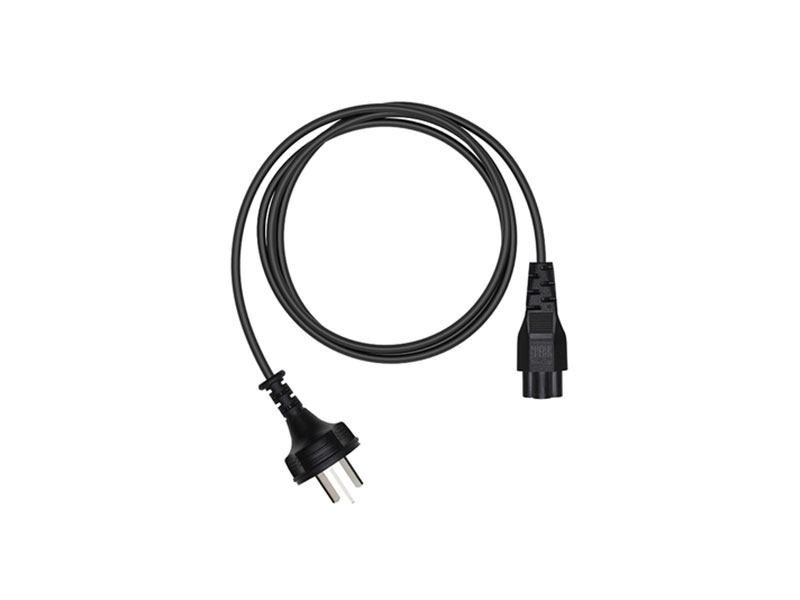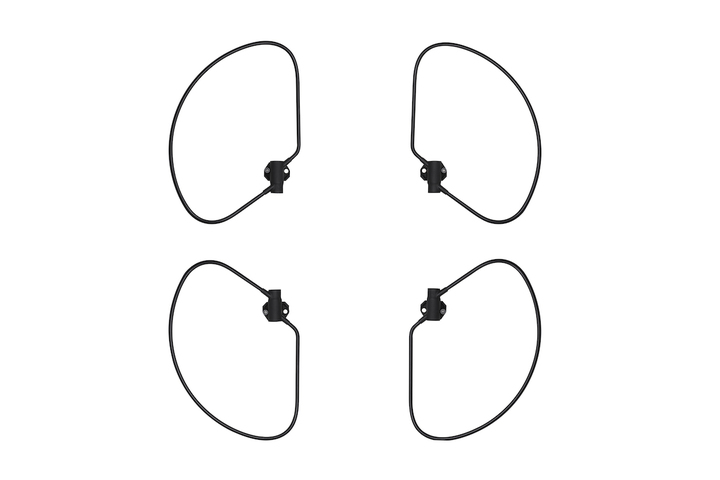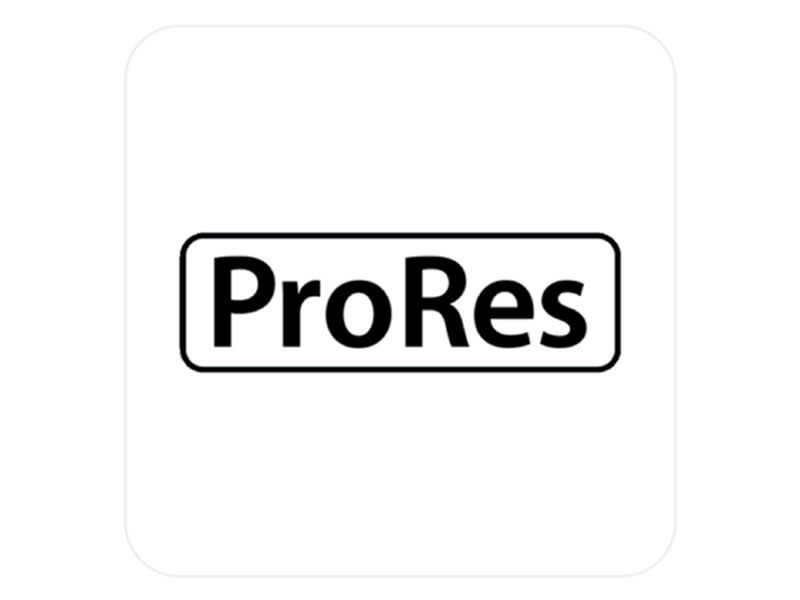



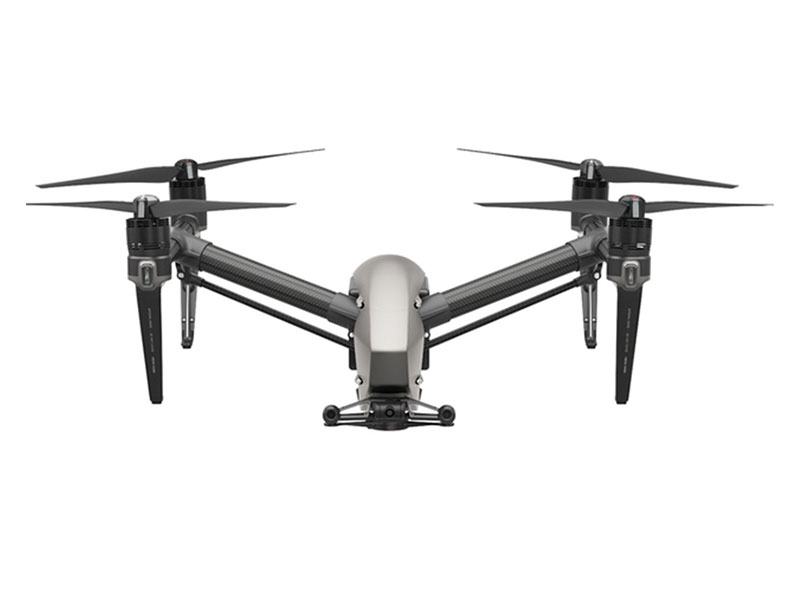
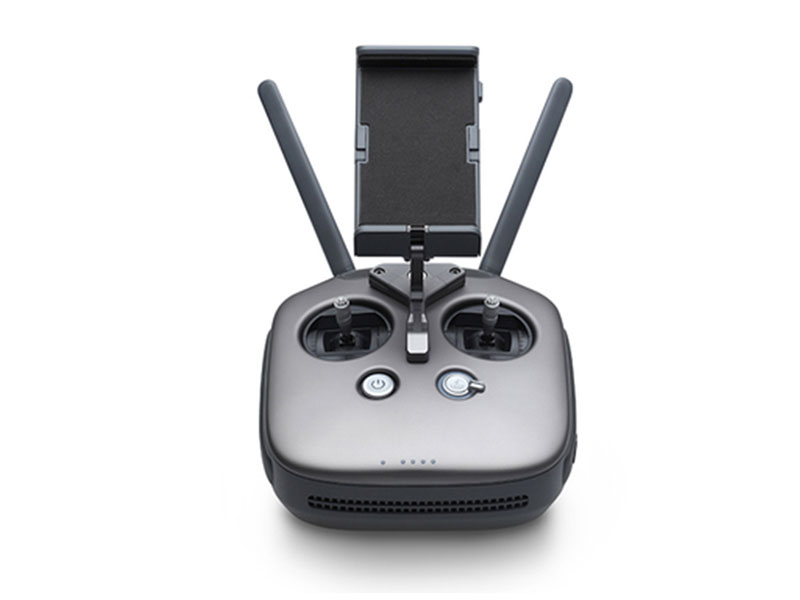
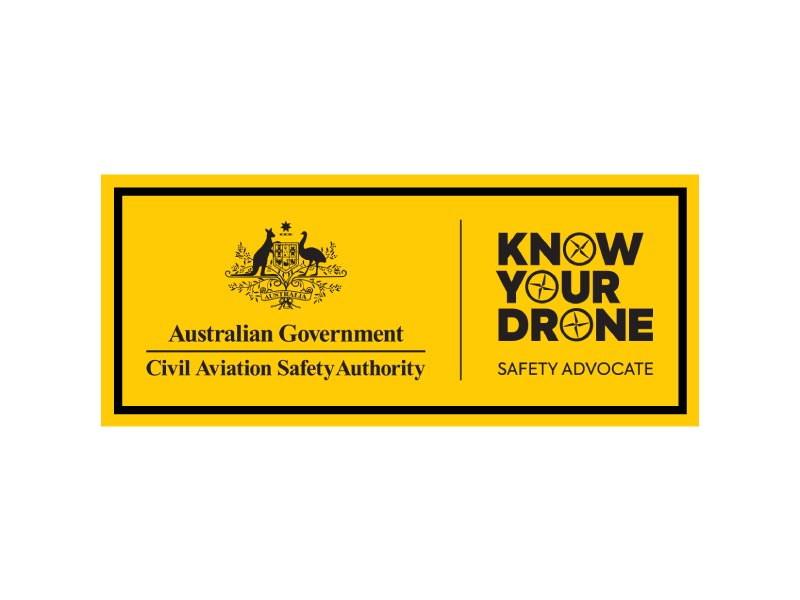

Free Shipping
Find Inspiration in Your Own Imagination with the DJI Inspire 2
Filmmakers and entrepreneurs alike look to the Inspire 2 for its superior power, image and video quality as well as its intelligent control. It’s got an all-new CineCore 2.0 image processing system, DJI FlightAutonomy system and DJI Lightbridge technology within its stylish magnesium aluminum shell.
Get a 1-Year Warranty and FREE Shipping when you get the Inspire 2 at D1 Store. Check out our Best Price Guarantee Packages for better deals, or visit a D1 Store in Melbourne, Sydney, Queensland, and Perth today.
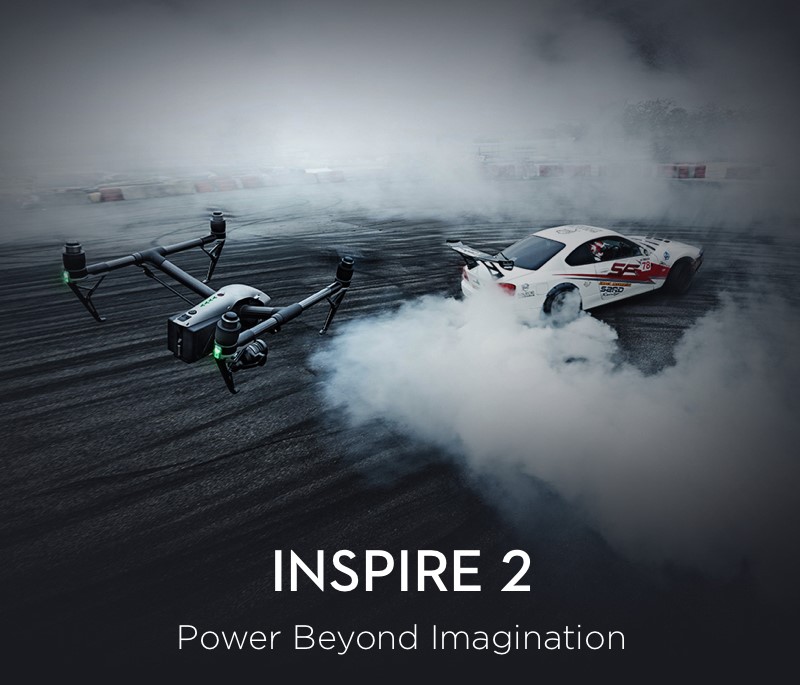
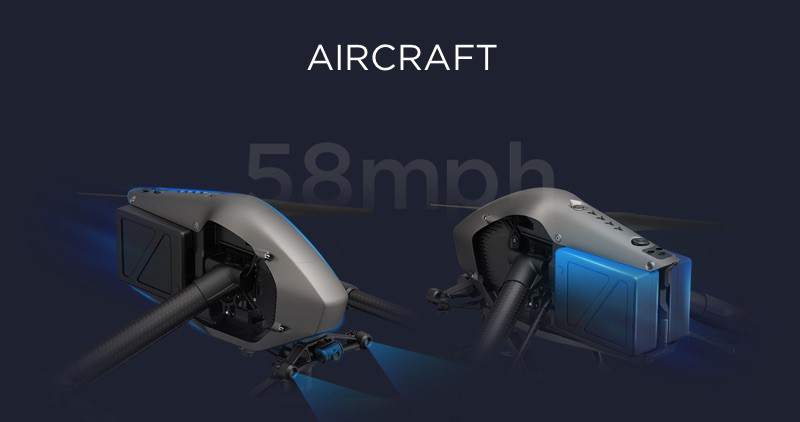
Magnesium aluminum composite shell and transforming design, carbon fiber arms
Vision sensing, 2-axis FPV camera, range of supported cameras
58mph (94kph) max speed, 2kg thrust per rotor, 15in props, maximum 27min flight time (with X4S).
Dual battery, self-heating, battery redundancy, 98Wh

Image Processing and storage: 5.2K@4.2Gbps RAW video recording, CineCore 2.0, integrated DJI CINESSD.
CinemaDNG and Apple ProRes 5.2K video support, H.265 and H.264 video codec support, 4K video at 100Mbps.
Recorded video can be stored simultaneously on the DJI CINESSD and a Micro-SD card.
FAT32/exFAT universal file system.
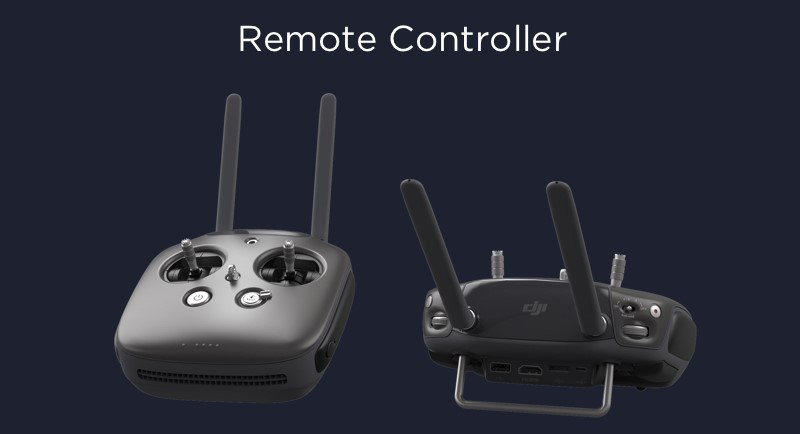
*Unobstructed, free of interference, when FCC compliant.
Integrated into the Inspire 2 is the brand new Cinecore 2.0 image processing system, capable of recording 5.2K videos in CinemaDNG * 1, Apple ProRes * 2 and more. CineCore 2.0 is built into the aircraft nose and works with any camera connected through the dedicated gimbal port. (Currently compatible with X4S * 3 and X5S)
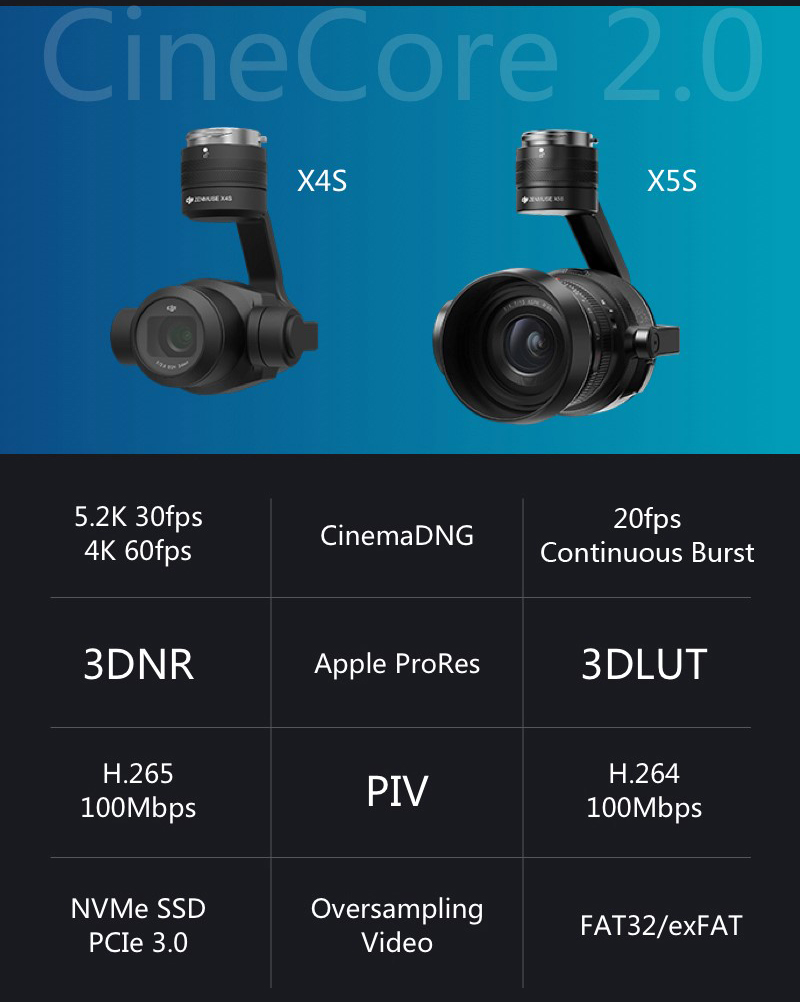
5.2K (5280*2972, 16:9) 30fps 12bit, 4.2Gbps
4K (4096*2160, 17:9) 60fps 10bit, 4.0Gbps
5.2K (5280*2160, 2.4:1) 30fps (422 HQ)
4K (3840*2160, 16:9) 30fps (4444 XQ, no alpha)
Built-in 3D noise reduction, 3DLUT color management technology, advanced sensor correction. H.264/AVC BP/MP/HP Level 5.1: 4K 60fps, 100Mbps; H.265 MP Level 5.1: 4K 30fps, 100Mbps;
JPEG/DNG/JPEG+DNG 14fps in burst 20.8 MP * 4
DNG 20fps continuous burst 20.8 MP * 5
*1 *2 Additional licenses required *3 X4S does not support DNG RAW or Apple ProRes *4 Photos stored on Micro-SD card *5 Photos restored on DJI CINESSD
The Inspire 2 creative workflow has been completely optimized and is now capable of recording video in CinemaDNG and Apple ProRes, and other common formats for post-production in filmmaking. Also supported are FAT32/exFAT* file systems, which allow fast copying of files direct from the CINESSD without additional software.
*Coming soon.
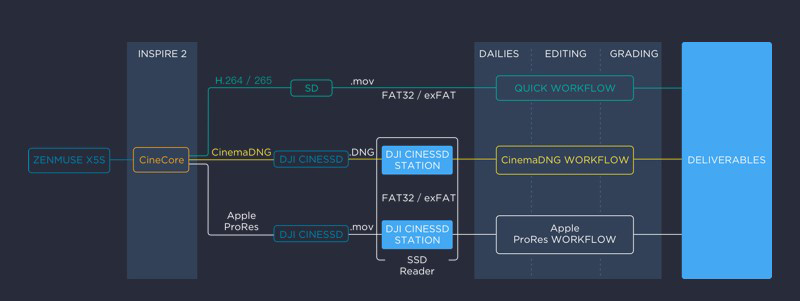
Forward and downward vision systems enable the Inspire 2 to detect obstacles up to 30 meters ahead, allowing for protected flight at up to 34mph (54kph) at a controllable attitude angle of 25°. Upward facing infrared sensors scan obstacles 16ft (5m) above, adding protection when flying in enclosed spaces. Obstacles sensing systems are active during normal flight, RTH and all Intelligent Flight Modes.
These sensors are core components of the DJI FlightAutonomy system, which brings the below intelligent features to the Inspire 2:
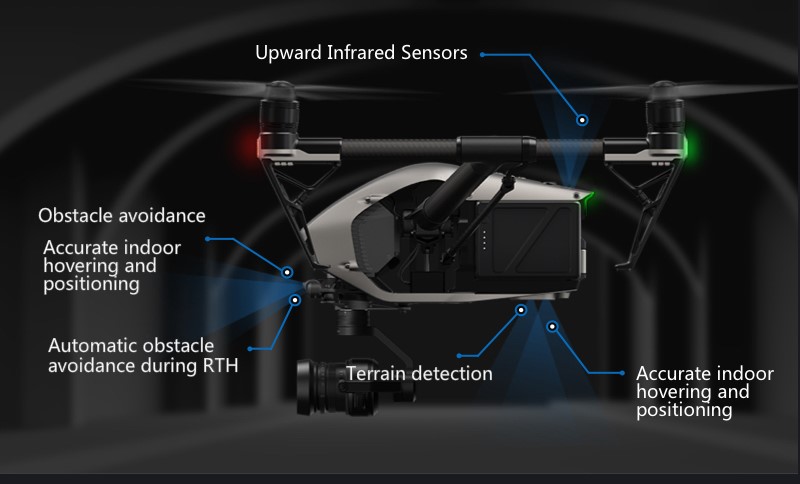
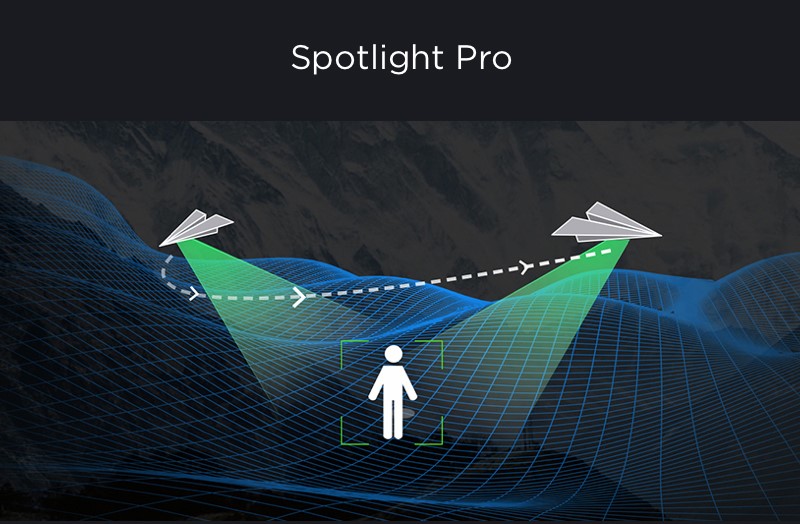
Spotlight Pro is a powerful tracking mode that allows even single pilots to capture complex, dramatic images. It uses advanced visual tracking algorithms to lock onto a subject during flight, regardless of the direction that the Inspire 2 flies, creating shots that would once have required a dedicated camera operator. If the gimbal comes close to reaching its rotation limits, the Inspire 2 itself will rotate in the same direction without affecting flight control or the shot being captured to free up gimbal movement.
It has two shooting modes, Quick Mode and Composition Mode.
In Quick Mode, select an object to begin tracking. In Composition Mode, select the subject and the tracking position. When the subject enters the preset tracking position, press the shortcut to begin tracking. The gimbal can be moved during shooting for composition adjustments.
Spotlight Pro is available in all Intelligent Flight Modes including ActiveTrack, TapFly, Waypoint and Point of Interest.
In addition to Spotlight Pro, a range of other intelligent flight and shooting modes are available. Obstacle avoidance is optimized when using Point of Interest* and Waypoint* modes, making complex shots simple and repeatable. Also available are QuickSpin, TapFly and ActiveTrack, to simplify challenging shots.
*Coming Soon.
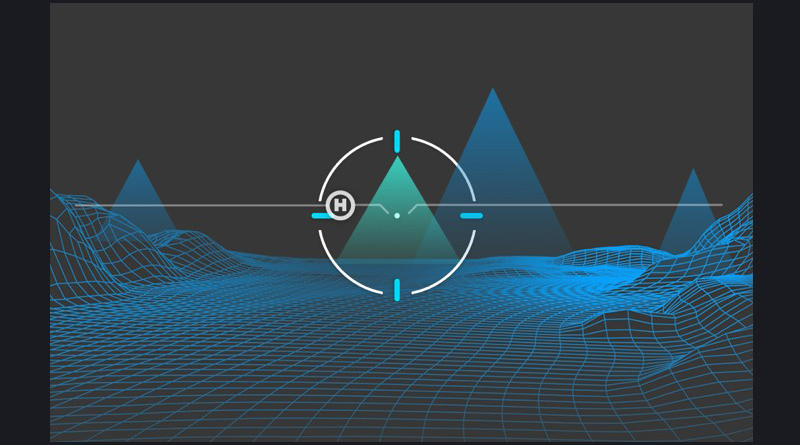
The 2-axis onboard FPV camera separates the flight view from the main camera view, effectively giving the Inspire 2 a dedicated TapFly camera. Tap a point onscreen in the FPV view to set a flight route and the Inspire 2 will automatically fly along that route, leaving the pilot to focus on gimbal movement.

The ActiveTrack Mode allows the Inspire 2 to recognize a range of objects, from people to bikes to cars to boats. Tracking profiles that can be adjusted based on the subject being tracked means greater tracking precision.
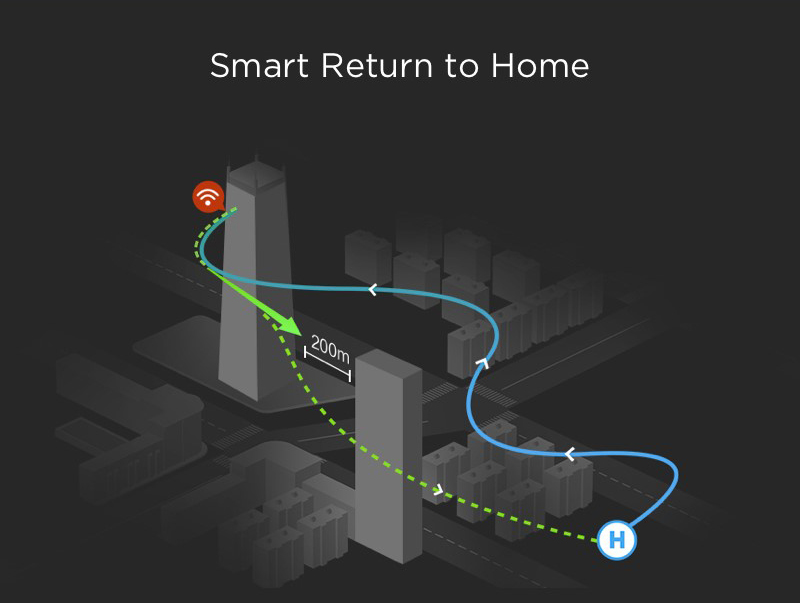
Forward and downward vision systems allow the Inspire 2 to create a real-time map of its flight route as its flies. If the video transmission system signal is lost and Smart Return Home is enabled, it is able to fly home along its original route, and change to a straight line when it regains a signal. As it returns, it will use the primary camera to identify obstacles as far as 200m in front, allowing it to plan a safe route home. It is also able to reconnect more quickly after losing connection.
The latest update to DJI Lightbridge technology has an effective transmission distance of up to 4.3mi (7km)* and is capable of delivering both 1080p/720p video as well as the FPV view to pilot and camera operator. Users can also switch between 2.4GHz and 5.8GHz** control frequencies to cut through noise for greater signal stability.
*Unobstructed, free of interference, FCC compliant. **5.8GHz transmission is not available in some regions due to local regulations.
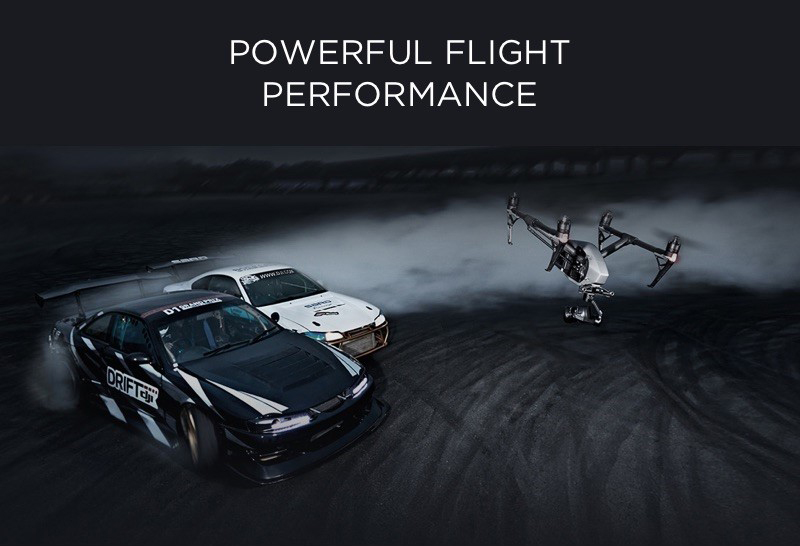
A new propulsion system optimized for power creates a new level of flight performance. The Inspire 2 flies at up to 58mph (94kph) descends at 9m/s and climbs at 6m/s. It can accelerate from 0 to 50mph (80kph) in just 5 seconds and flies at a max attitude angle of 40°
The two controller sticks are tuned for more sensitivity, making delicate maneuvers easier.
More power also allows the Inspire 2 to fly in more extreme conditions, including over 2500-5000m above sea levels (using optional dedicated propellers), and in temperatures as low as -4°F (-20°C) using self-heating Intelligent Flight Batteries.
Reliability has been further enhanced through dual redundancy of key modules such as the IMU and barometer. The intelligent flight control system monitors the redundancy system, giving it accurate flight data.
The new obstacle sensing system helps the Inspire 2 sense and avoid obstacles, minimizing the risk of collision.
Dual batteries mean that if a problem occurs on one battery the other is able to continue flight long enough for a safe landing. At the same time, the Inspire 2 propulsion system is driven a PWM signal with serial port signal redundancy so that if PWM signals are lost, transmission will continue through the serial port.
This propulsion system has been tested for thousands of hours to ensure reliability, when combined with key sensors and a dual-battery design, overall flight reliability is significantly enhanced.
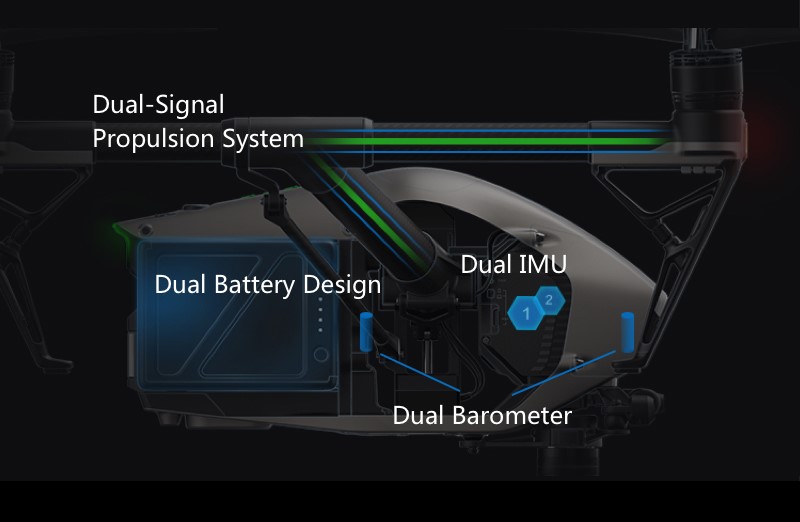
A series of powerful DJI accessories help improve work efficiency and give filmmakers more creative opportunities.
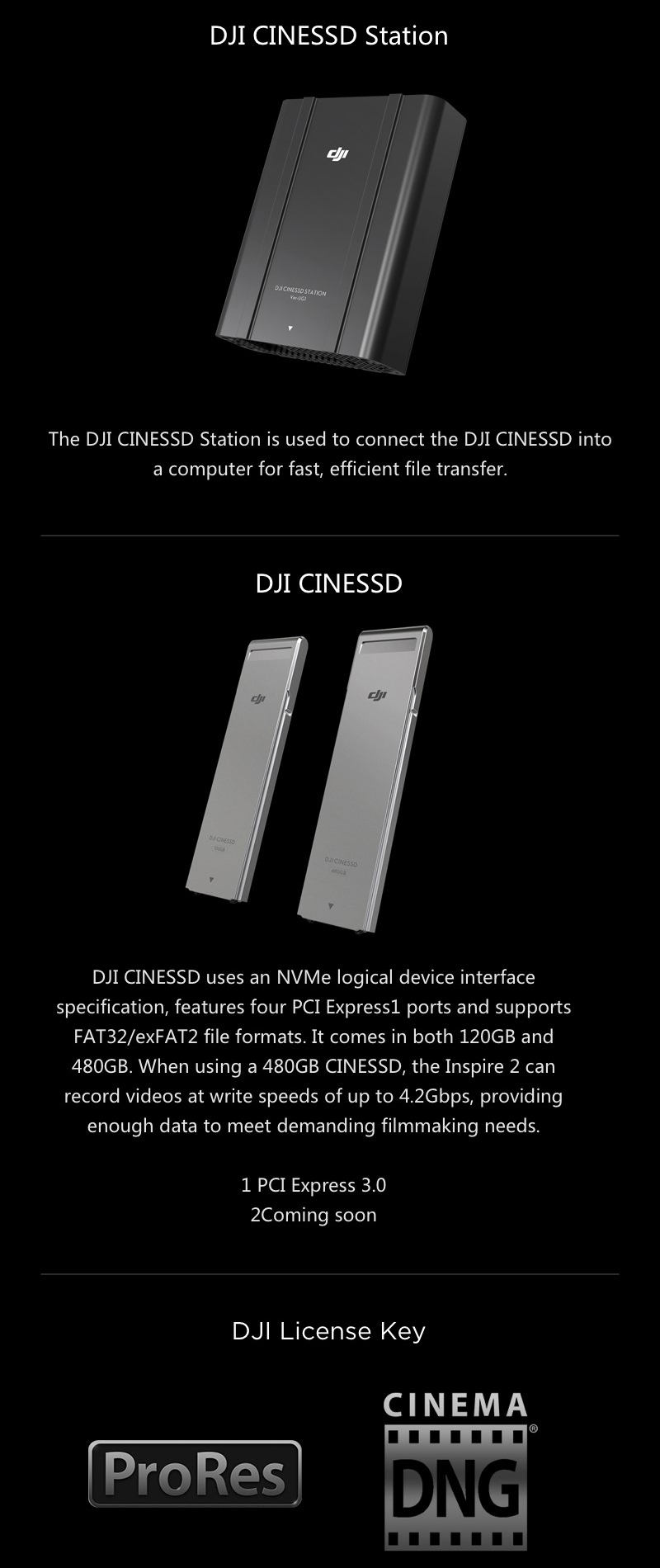
DJI License Keys allow CineCore 2.0 to record in CinemaDNG and Apple ProRes. These are available for purchase separately and allow the Zenmuse X5S camera to produce the exact file type needed for individual post-production requirements.
*Maximum video resolution is subject to DJI CINESSD capacity.Refer to the Licensing page for details.
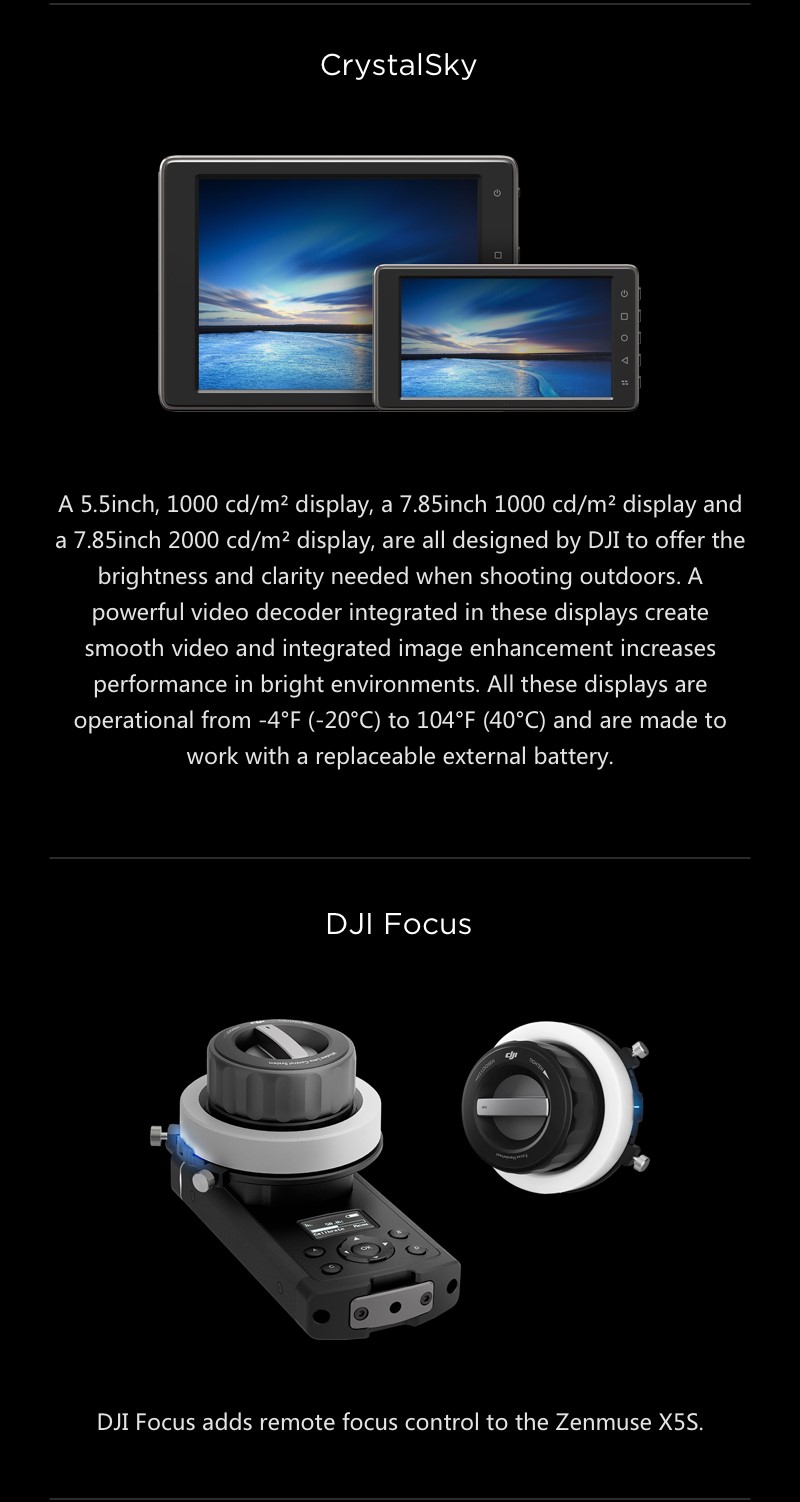
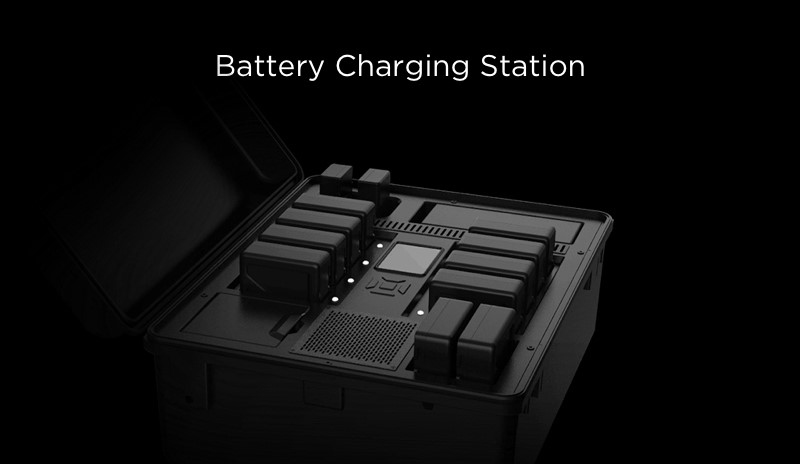
An 800W Battery Charging Station charges up to eight Inspire 2 batteries. With additional space for storing four Intelligent Flight Batteries and a standard battery charger. The Battery Charging Station is also equipped with two USB charging ports.
*Coming Soon
The Inspire 2 supports control over 4G. USB dongle and SDK development required. This high bandwidth allows the Inspire 2 to transmit high quality videos to a network server or can be used for ultra-long distance control. It also cuts video transmission latency to 500ms.
An all-new handheld camera mount3 is compatible with the Zenmuse X4S and the Zenmuse X5S, bringing these cameras down to the ground for more flexible filmmaking.
*Coming soon
A GPS Accessory for the Remote Controller improves the accuracy of the remote controller’s positioning. Used with the Inspire 2’s Dynamic Home point function which constantly updates the latest location of the remote controller as its Home point, it allows accurate Return to Home when moving around an environment.
*Coming Soon
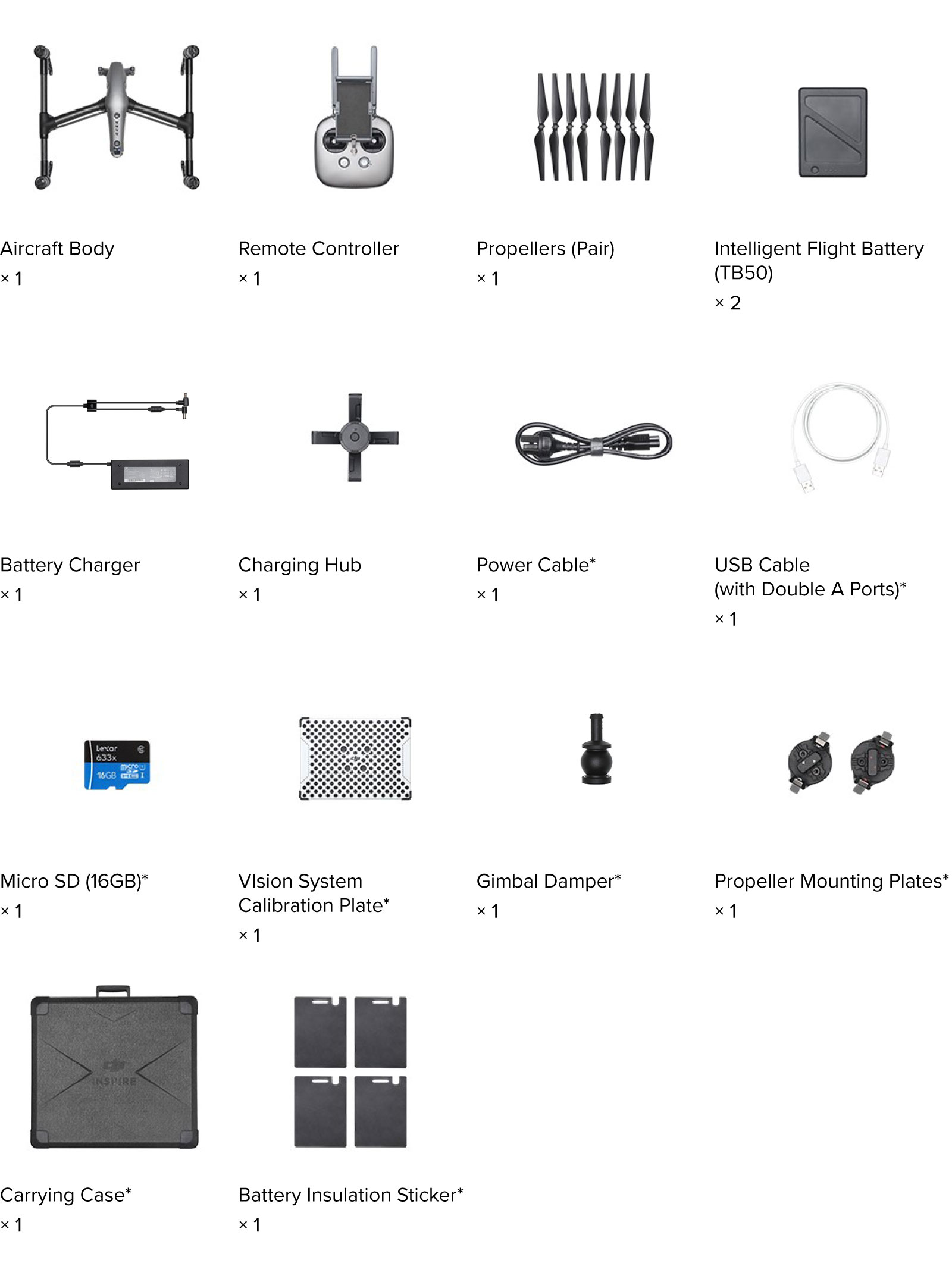 *Accessories are not covered by Warranty
*Accessories are not covered by Warranty
Max Ascent Speed 6m/s (Sport Mode);Max Descent Speed: Vertical, 13.1 ft/s (4 m/s); Tilt, 13.1-29.5 ft/s (4-9 m/s)Default tilt is 13.1 ft/s (4 m/s), can be set in-app. Max Speed 26m/s, 58 mph (94 kph, flight forward in S-mode).
Up to 25 minutes with Zenmuse X5S. Up to 27 minutes with Zenmuse X4S.
The Inspire 2 currently supports the Zenmuse X4S, Zenmuse X5S and Zenmuse X7.
No. Please purchase your gimbal and camera separately.
Yes. Its Forward Vision System is capable of detecting obstacles up to 30 meters ahead, while the upward facing infrared sensors can sense obstacles within a 5 meter range.
No. You will need to use an Inspire 2 remote with your Inspire 2 aircraft.
Yes. The maximum effective distance between the Master and Slave controllers is 100 meters, and both controllers will receive the same HD live view.
Currently, only the new Zenmuse X4S and Zenmuse X5S are supported.
Yes. Included in the box is a 16GB Micro SD card. It supports SD cards up to 128GB.
Currently supported Micro SD cards are:
Sandisk Extreme 32GB UHS-3 V30 MicroSDHC;
Sandisk Extreme 64GB UHS-3 V30 MicroSDXC;
Panasonic 32GB UHS-3 MicroSDHC;
Panasonic 64GB UHS-3 MicroSDXC;
Samsung PRO 32GB UHS-1 MicroSDHC;
Samsung PRO 64GB UHS-3 MicroSDXC;
Samsung PRO 128GB UHS-3 MicroSDXC;
*It's not recommend to use the Patriot EPPRO 64GB MicroSDXC UHS-3.
L:42.7cm x H:31.7cm x W:42.5cm without propellers (landing mode).
The Inspire 2 has 3512 motors and 1550T propellers.
No, please purchase the Highland propellers separately.
Yes. The Inspire 2 uses 3512 motors and 1550T propellers. The max thrust for each rotor reaches up to 2kg. Thousands of hours have been spent on testing to ensure top safety and reliability.
The Inspire 2 Intelligent Flight Battery has a capacity 97.5Wh. Most airlines allow carrying batteries below 100 Wh in carry-on luggage. However, as regulations may vary across airlines and regions, please contact your airline or the regulatory body of your destination.
The new dual-band Lightbridge HD video transmission system has a maximum transmission distance of 7 km*. The video feed from the FPV camera and main camera (1080p or 720p) can be viewed simultaneously through the Picture in View feature. The dual-band system consists of 2.4GHz ISM and 5.8GHz ISM**, giving the Inspire 2 stronger resistance against interference. *Unobscured, free of interference, FCC compliant. **In accordance with local law and regulations, 5.8GHz is not available in some countries.
The remote controller is equipped with a 6,000mAh LiPo 2S battery. Fully charging the Inspire 2 remote controller takes approximately 3 hours. It can be used for approximately 4 hours after being fully charged.
The mount can support an iPad Air or other similar-sized tablet. Tablets should be no more than 170mm tall.
Open the DJI GO 4 app, click the remote controller icon and enter to Settings. You can choose MODE1, MODE2, MODE3, Custom and more under Stick Mode.
No. The remote controller has a mobile device holder for smartphones and tablets. You can also buy the DJI CrystalSky monitor.
The distance here refers to environments free of obstructions and interference, under FCC compliant specifications.
The Master and Slave remote controllers can maintain a connection at distances up to 100 meters.
There is no training port on the Inspire 2 remote controller.
Below 220ms.
You will get a 180W Battery Charger and a Battery Charging Hub in the box with your Inspire 2. When connecting the standard Battery Charger to the Battery Charging Hub, it takes about 90 minutes to charge 2 batteries and 180 minutes to charge 4 batteries.
The Inspire 2 can take off if the power discrepancy of the two batteries is within 13%. If it is unable to take off, the DJI GO 4 app will inform you that “the power discrepancy in the two batteries is too large”.
The Inspire 2 continuously checks battery status and will notify you through the DJI GO 4 app if a battery malfunctions. In this case, please land the aircraft immediately.
By charging and discharging a pair of batteries together you will maximize flight time and battery life.
Please match batteries on the battery interface of DJI GO 4 app.
You will hear the Exit button click to confirm successful mounting of each battery. Other signs is that the button will have less give when you tap it, and that the batteries will not detach when pulled. The DJI GO 4 app also will not inform you of errors and show a full status for each battery when properly mounted.
It is recommended that you keep the Intelligent Flight Batteries charged to 50% when storing them.
If storing for a long period of time, we also recommend that you fully discharge them every 3 months.
No, you will need to purchase a DJI License Key to enable these formats.
No.
640 x 480px.
Yes. Press and hold the C2 button, and at the same time use the left dial to control the pitch. The roll axis is not controllable.
No. You need to purchase the DJI CINESSD and DJI CINESSD Station card reader separately.
120GB , 240GB and 480GB.
Yes. Many key parts of the Inspire 2 are designed with redundancy, including IMU sensors and barometers. The Inspire 2 flight controller monitors and analyses the redundancy data in real time, to ensure that flight data is correct.
Yes. During RTH, the Inspire 2 is able to collect information about the environment and automatically plan the best path back home. Being able to detect obstacles 200m away, it also restores communication faster with the remote controller during RTH after losing signal, so as to make RTH safe and successful.
To use ActiveTrack, you should keep your Inspire 2 at least 2m above the ground and set the aircraft to P-Mode.

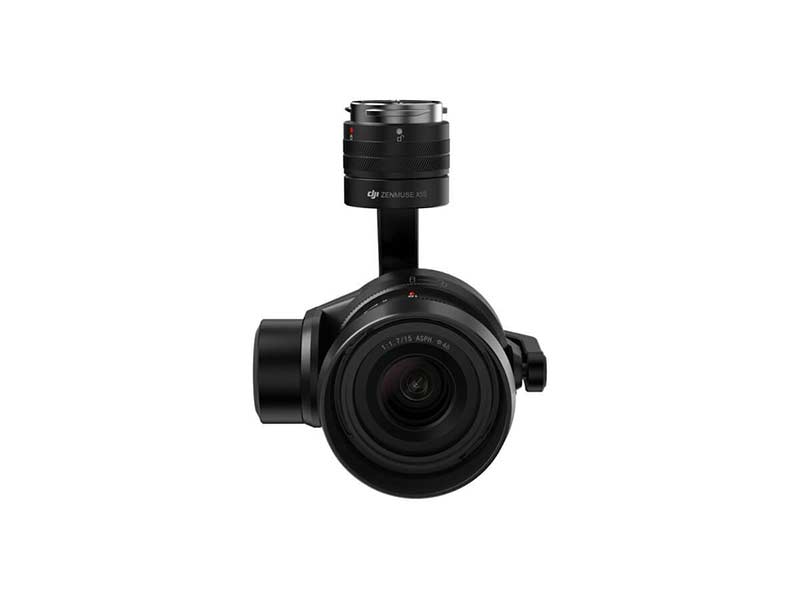
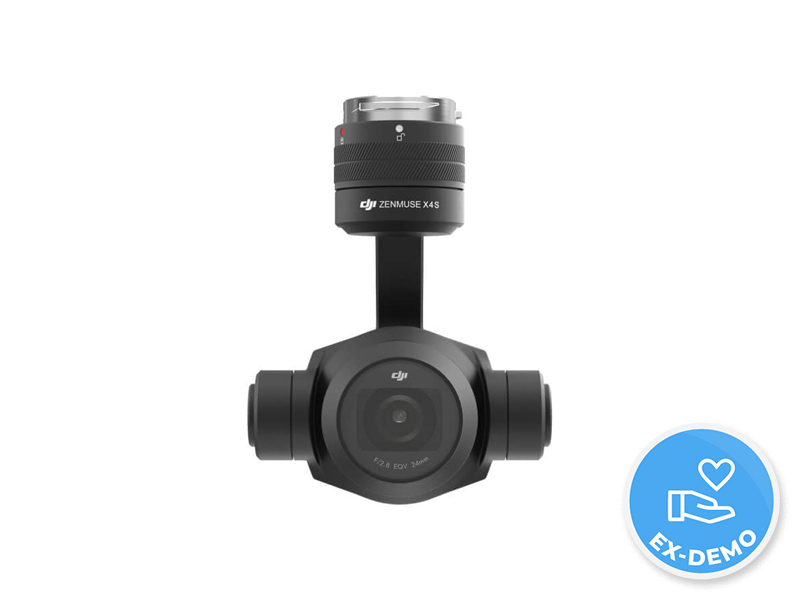
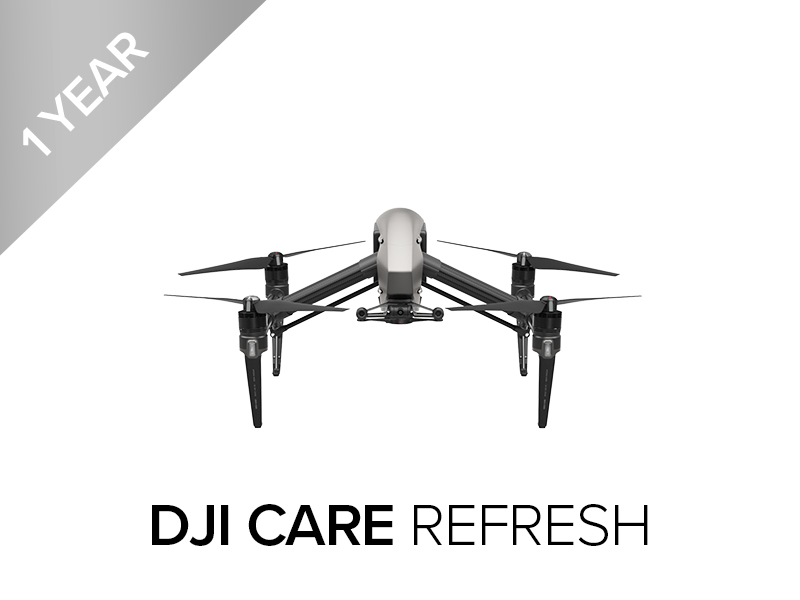

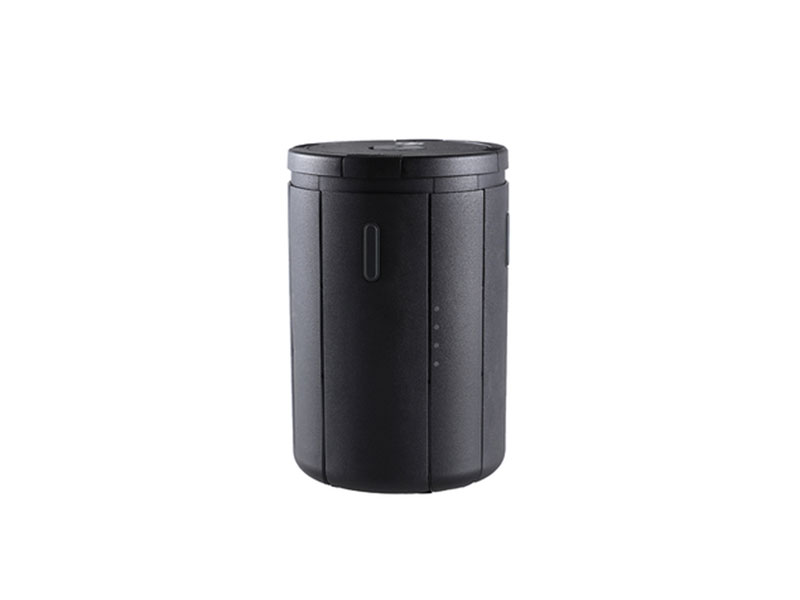
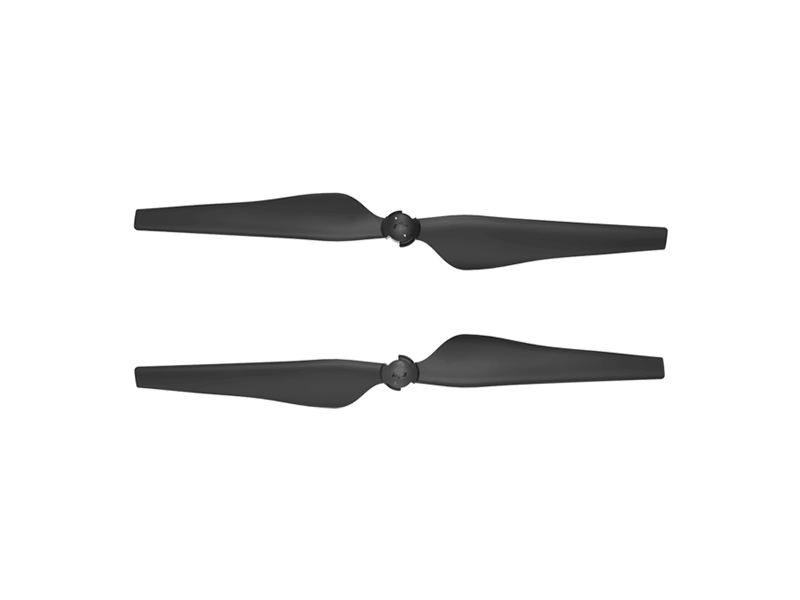
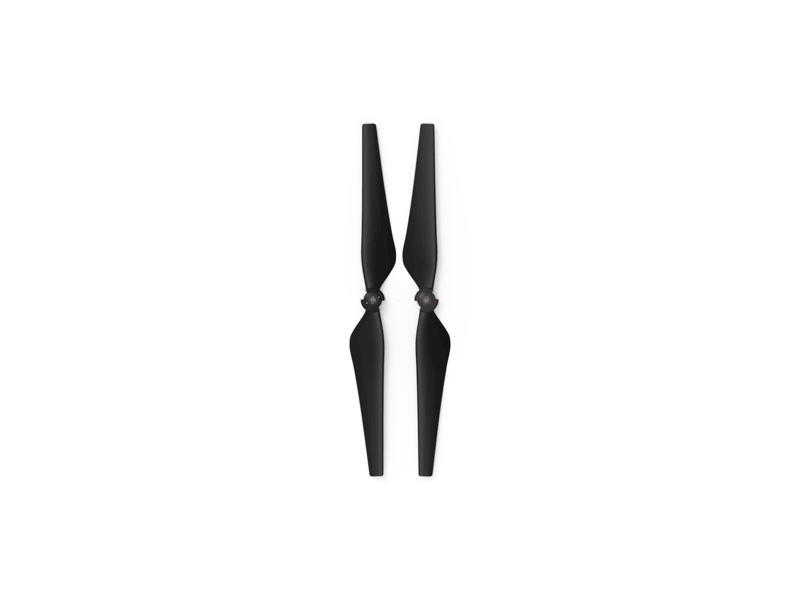
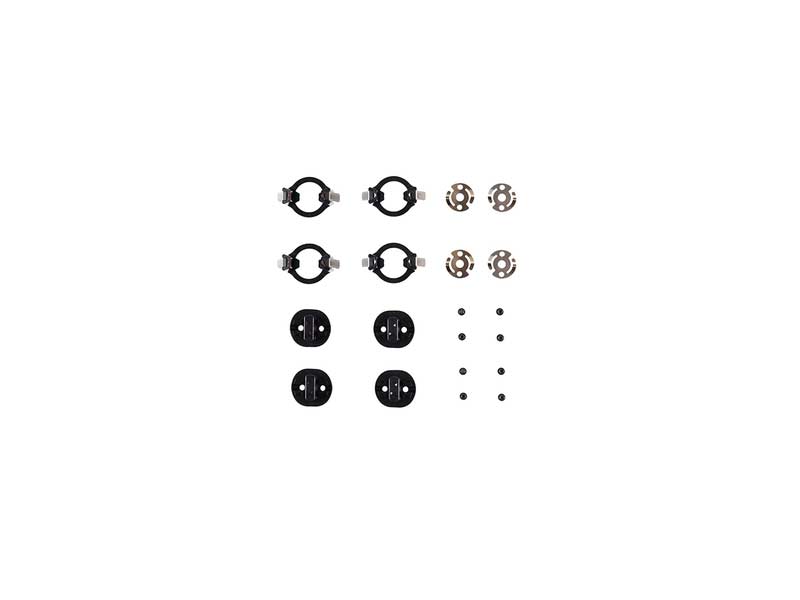
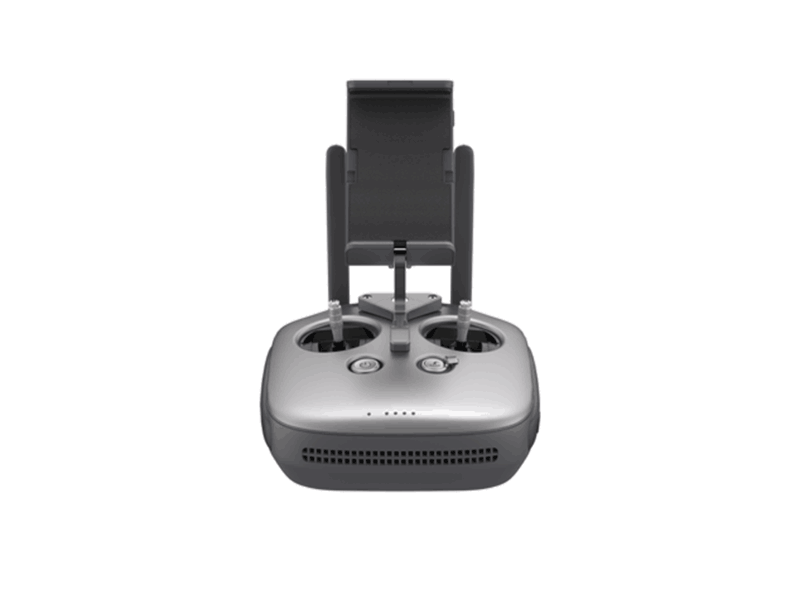
.jpg)
